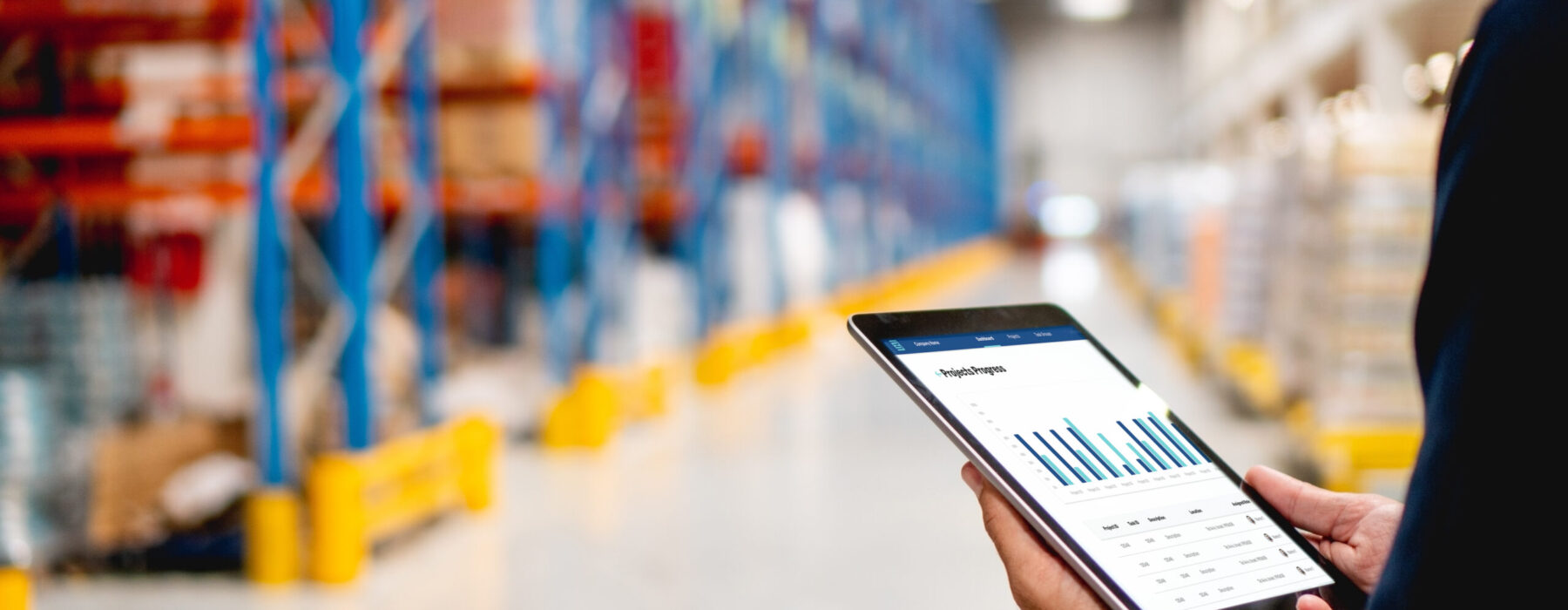NOVEMBER 9 • 2020

Reinvent Your Supply Chain Using Disruptive Technologies

Reinvent Your Supply Chain Using Disruptive Technologies
By Robert Steward • President and CEO of End2End, LLC
Supply chains are moving away from a traditional, linear, left-to-right structure with fixed inter- relationships to flexible customer-centric structures where relationships are formed to process and fulfill orders. With that in mind comes a question: Do you know who your customer is?
You might think that it’s not up to you to think of the end customer, but it turns out that by knowing the endpoint of the chain, you can provide a personalized, tailored experience where all the parts of the chain converge. Once you know that, it’s time to think about how you can reinvent the customer experience, starting with the supply chain.
Transforming the Customer Experience
First off, it’s all a matter of understanding how your own business works. Most of the time, supply chain-related businesses perceive themselves as a means to an end when, in fact, they’re means in themselves.
Let’s use two examples to illustrate this point. A gas station, for example, serves food and sells gas. But it’s more than that because it actually facilitates transportation. Its role goes beyond the service it provides. Similarly, an auto manufacturer makes cars. But, in truth, what it gives us is a mechanism to move from one place to another.
Understand that you act as a facilitator; you help the customer get what they want. Whether you handle logistics, inventory management, machine inventory, or asset inventory, you’re a facilitator. You make it easier for consumers to receive their goods.
Reinventing Supply Chain Management Using Technology
Technology adds visibility to the whole supply chain, opening a new way to manage stock movements and customer deliveries. Also, by being able to track items through the supply chain, enterprises can optimize stock levels and transport modes, improving risk management and efficient collaboration.
Besides, visibility forces people to think outside of their traditional silos. By gathering relevant data about each item and part of the supply chain, technology solutions can bridge the gaps left by every part of the chain. In short, technology, and data in particular, can help you answer five of the most pressing supply chain questions:
• When did it ship?
• When did it arrive?
• What was the condition?
• What was the asset experience?
• When, where, and what happened?
According to Gartner, by 2023, at least 50% of large global companies will be using AI, advanced analytics and IoT in supply chain operations.
How can data assist supply chain management professionals in improving their processes? That’s simple: IoT technology can help you collect and process enough data to predict outcomes accurately.
IoT technology gives you hyper-granular visibility into the supply chain, even into units- of-one. Using IoT, you can track everything, from a single sneaker, to the truck that transports it, to the container where it’s shipped.
Besides, with so many geographically dispersed stakeholders involved, IoT presents a new way of managing uncertainty when it comes to fulfillment, traffic, and stock shortages. By making use of sensor-enabled IoT solutions, supply chain professionals can get actionable data and keep track of their inventory.
How IoT Tracking Improves Visibility
Today, every piece of digital technology we use is constantly sharing, processing, analyzing, and discovering data. That means devices can tell us more about what’s happening than ever before. However, much of this data can be misinterpreted or dismissed as unimportant because sometimes devices collect just too much of it. IoT solutions take raw data, process it, and put it out in a format that’s easier for you to analyze by enriching, filtering, or aggregating.
The Benefits of Predictive Analytics in the Supply Chain
As you can tell by now, data is the new theme behind the supply chain. Nowadays, thanks to IoT-connected devices, there’s more data available than ever before, which should be more than enough to fuel predictions.
Predictive technologies such as cloud-based inventory management solutions help companies eliminate overstocking and enable every part of the supply chain to work with each other, as opposed to each operating in individual silos.
These are the benefits of predictive analytics in the supply chain:
- Enhanced business productivity
- Improved decision-making processes
- Timely delivery of products and services

The Most Effective Way to Take Advantage of Your Data
The first thing you need to take advantage of your data is to achieve a single version of truth across your company. This means a uniform version of a sales forecast that drives all the actions across a supply network.
The idea here is that you need to have a unified version of things that merges systems of records with your master data. This will enable and simplify intra- and inter-company collaboration, effectively managing all the associated risks and challenges of your supply chain.
According to a McKinsey survey, only 18 percent of companies believe they have the skills necessary to gather and use insights effectively.
With this in mind, how can you take advantage of your data? Simple: Don’t forget to take these three points into consideration:
- Stick to a consistent frequency of updates.
- Create criteria for data to be considered.
- Ask for complete data.
This is where an IoT-powered software solution can help you by giving you a dashboard where you can see your key metrics at a glance. Your dashboard reflects the single version of the truth with all your metrics close at hand so you can make total sense of what’s happening at every step of the way.
Keeping Your Supply Chain Secure Using IoT
IoT applications allow supply chains to achieve a variety of goals, including better inventory tracking, error reduction, and fraud prevention. However, as you know, any device that connects to the internet comes with inherent cybersecurity risks.
IoT sensors are used to collect information relating to environmental conditions, like how long the cargo remains in a particular truck or at a specific port, and whether or not it’s being tampered with, which violates the handling directions.
According to Honeywell, 72 percent of manufacturers said they are not effectively connecting industrial IoT platforms to their supply chains.
With these numbers in mind comes the question of security. Security, in this case, means visibility and understanding which devices are connected or have access to the network. However, while IoT-connected supply chain solutions are often run in secure internal networks that isolate them from external attacks. That doesn’t mean accidents can’t happen, but it means that you can prepare to face counteract them.
Getting Started With an IoT Supply Chain Solution
IoT supply chain solutions can be used for a variety of things, from the monitoring of company assets or valuables to the tracking of fleets and individual cars.
IoT supply chain solutions can help business owners keep an eye on personal property and valuables that are moving from one place to another, or keep track of their workforce’s whereabouts at a glance.
With the help of a mobile IoT tracking tool, you can instantly pinpoint the location of your assets and view all that information on any device that’s connected to the internet.
IoT-connected receivers get your employees’ positions using satellite information. That information is then turned into useful information by your tracking app, which receives the coordinates and transmits them to your network. This technology uses sensors to collect and a transmitter to move data that could not easily be collected before.













